Table of contents
Strictly speaking, only wild blueberries ( Vaccinium myrtillus ) from Europe and East Asia are referred to as bilberries or blueberries . In contrast, the raw blueberries available in supermarkets are mostly so-called cultivated blueberries of North American origin.
Use in the kitchen:
Purchased cultivated blueberries or wild blueberries that you have picked yourself can be used in a similar way in the kitchen. However, wild blueberries taste more aromatic, are less sweet and not as large as crossbred cultivated blueberries. All blueberries have a limited shelf life.
Blueberries from the forest should always be washed thoroughly and, if in doubt, cooked, as they could be infected with fox tapeworm eggs (very rare). 1
Blueberries are a delicious raw food snack for in-between meals and taste fresh in fruit salad, muesli or smoothies . Hot blueberries can be served with ice cream, pancakes, crêpes or (plant-based) milk dishes. The berries can be used to make delicious jams, jellies and juices or they can be used for blueberry compote, blueberry ice cream, red fruit compote, blueberry tiramisu and other desserts. The dark berries are also great in muffins, blueberry cakes, tarts or as a filling in yeast dumplings.
Blueberries are a component of the gluten-free and raw vegan Erb-Müesli . It also contains energy-giving bananas, citrus fruits with lots of vitamin C and fiber-rich apples as well as pseudocereals, seeds and golden millet. Try the Erb-Müesli plus oat flakes variant!
Vegan recipe for blueberry muffins:
Preparation : First, mix 250 g (wholemeal) flour and 100 g ground almonds with 1 teaspoon of baking powder, a little real vanilla, 80 g of raw cane sugar and a pinch of salt. Add a mashed banana, 150 ml of oat drink, 70 ml of rapeseed oil and the juice of half an orange and mix all ingredients into a smooth dough. Finally, carefully fold in 200 g of fresh blueberries. Divide the dough into muffin cases and bake in a preheated oven at 180 °C top/bottom heat for approx. 25 minutes.
Recipe for blueberry tea:
Blueberry tea can be purchased at the drugstore or pharmacy and prepared according to the instructions on the package.
Preparation : For one cup of tea, boil 1-2 tablespoons of dried blueberries for 10 minutes and then strain the berries. 2
Vegan recipes with blueberries can be found under the note: " Recipes that have the most of this ingredient ".
| Not only vegans or vegetarians should read this: Vegans often eat unhealthily. Avoidable nutritional errors . |
Purchasing - where to buy?
Cultivated blueberries are available in Europe all year round. Fruit from European or North African harvests come from Spain or Morocco in April, from France in early June and from the end of June to the end of October from other local producers (e.g. from Germany, Poland, Italy, the Netherlands). In the winter months, air freight shipments from Chile, Argentina and Uruguay supply the European market. 1
You can buy cultivated blueberries in organic or conventional quality in supermarkets such as Coop, Migros, Denner, Volg, Spar, Aldi, Lidl, Rewe, Edeka or Hofer, but also in health food stores, in smaller organic shops and in organic supermarkets such as Denns or Alnatura . During the Central European season from the end of June to the end of October, you can buy blueberries at the weekly market, directly from the farmer, via a subscription box (green box) or you can collect them at self-picking facilities.
Wild European blueberries ( Vaccinium myrtillus L.) are usually available frozen in stores or online.
Found in the wild - Season:
Wild blueberries can be picked in the temperate to northern zones of Eurasia and in North America up to altitudes of over 2,000 m. The deciduous dwarf shrub is 10-60 cm high and has many branches. The leaves begin to change their autumn colours in late summer and fall off in the winter months. 3 Main areas of distribution are raised bogs, moorland heaths, acidic oak mixed forests, coniferous forests, bristle grass strips and dwarf shrub heaths. 4 The berries can be recognised by their blue-black appearance and dark flesh.
Cultivated blueberries are also increasingly found growing wild in suitable locations. Depending on the species, these semi-shrubs can reach heights of several meters or can be low-growing ground cover. They are characterized by the pitcher-shaped flowers and the blue-black berries with white flesh. The berries of the cultivated blueberry are significantly larger and less aromatic in taste than those of the wild blueberry. 5
In Central Europe, wild blueberries are ripe and ready for harvest from the beginning of July to the beginning of September ( season ).
The typical white frost on the surface of (cultivated) blueberries consists of microscopically small wax particles formed in the fruit skin. These are carried out with the respiratory water and deposited there. 5
Storage:
Fresh cultivated blueberries should be kept in the refrigerator. This greatly increases their shelf life. The berries can also be frozen without any problem, with hardly any loss of quality. If stored at around 0 °C, cultivated blueberries can even be kept for up to seven weeks. Wild blueberries, on the other hand, are very sensitive to pressure and only last for a week even at 0 °C. 1
Ingredients - nutritional value - calories:
Compared to wild blueberries, cultivated blueberries contain about twice as much sugar, only half as many organic acids and also fewer coloring anthocyanins. Minerals and vitamins are present in similar quantities. Wild blueberries are rich in organic acids (including malic, citric, tartaric, quinic, shikimic, 1 and chlorogenic acid). Tannins (7.6% in wild blueberries), alkaloids (myrtin), flavonoids (hyperoside) and the water-soluble fiber pectin can be detected in the berries. 4
The anthocyanin content in wild blueberries depends on the variety, the ripeness of the berries and the climatic conditions. The figures in the literature therefore vary between 3.8 g and 6.0 g per kilogram of fresh berries. Wild blueberries contain a total of 15 different anthocyanins (including cyanidin, delphinidin, peonidin, petunidin, malvidin). 6
The leaves of the blueberry bush contain iridoids 4 and the germicidal (antiseptic) arbutin, which is why the leaves are slightly poisonous. 3,7
Which vitamins are in blueberries? Blueberries contain 19 µg of vitamin K per 100 g, which covers 26% of the daily requirement. Comparable values can also be found in blackberries, avocados and Romanesco. Other berries are generally poorer in vitamin K (raspberries : 7.8 µg; strawberries : 2.2 µg), but green vegetables and herbs are much better sources ( chard : 830 µg; fresh basil : 415 µg). The fat-soluble vitamin plays an essential role in the blood coagulation system.
The complete ingredients of blueberries, the coverage of the daily requirement and comparison values with other ingredients can be found in our nutrient tables. In the article Nutrients explained you will get a detailed insight into the topic.
Ratio of omega-6 (LA) to omega-3 fatty acids (ALA) in berries:
Berries and wild berries usually have a very good ratio between LA (linoleic acid) and ALA (alpha-linolenic acid) . In general, berries have a low fat content and the amounts of omega-3 and omega-6 are accordingly low. In relation to the total fat content, however, the polyunsaturated fatty acids make up a high proportion.
The body uses alpha-linolenic acid to produce other omega-3 fatty acids ( EPA and DHA ), which have an anti-inflammatory effect, while linoleic acid is used to produce arachidonic acid, which has an inflammatory effect. The good ratio of omega-6 to omega-3 is another reason why the berries are considered a very healthy food.
Information on individual values of ALA and LA (source: USDA, Önwt, Debinet):
Berry (raw) | L.A. (g/100g) | ALA (g/100g) | Ratio LA:ALA | Total fat (g/100g) | source |
2.6 | 1.8 | 1.5:1 | 7.1 | Önwt | |
0.6 | 0.5 | 1:1 | 1.7 | Önwt | |
0.19 0.4 0.36 | 0.09 0.3 0.26 | 2:1 1.25:1 1.3:1 | 0.34 1.0 1.0 | USDA Önwt Debinet | |
Forest Blackberry | 0.4 | 0.3 | 1.25:1 | 1.0 | Önwt |
0.2 | 0.2 | 1:1 | 0.5 | Önwt | |
0.3 | 0.2 | 1.5:1 | 0.7 | Önwt | |
Blueberry | 0.2 0.22 | 0.2 0.15 | 1:1 1.5:1 | 0.6 0.6 | Önwt Debinet |
0.25 0.1 | 0.13 0.1 | 2:1 1:1 | 0.46 0.3 | USDA Önwt | |
Forest Strawberry | 0.1 | 0.1 | 1:1 | 0.4 | Önwt |
Forest Raspberry | 0.1 | 0.1 | 1:1 | 0.3 | Önwt |
Boysenberry | 0.11 | 0.08 | 1.5:1 | 0.3 | Debinet |
0.11 | 0.07 | 1.5:1 | 0.26 | USDA | |
0.09 | 0.06 | 1.5:1 | 0.21 0.4 | USDA Debinet | |
0.27 | 0.05 | 5:1 | 0.4 | USDA | |
0.05 0.04 | 0.04 0.03 | 1:1 1.25:1 | 0.13 0.2 | USDA Debinet |
Health aspects - effects:
Blueberries have a high antioxidative, i.e. cell-protective potential - indicated by the Oxygen Radical Absorbance Capacity (ORAC), which is 25 µmol TÄ/g fresh weight (Trolox equivalent). 12,13 Blueberries are among the fruits with the highest measured stress-reducing effect. The digestive process always causes losses. One should therefore not rely on in vitro studies. 14
The colorants (anthocyanins) contained in the oil are particularly important thanks to their properties as radical scavengers and, together with other flavonoids, have a strengthening effect on the immune system. With their antimicrobial effect, they support the body in fighting off viruses, fungi and bacteria. 1,4,6
What are blueberries good for? Blueberries have an astringent (contracting), diuretic, anti-inflammatory, anti-edema (capillary sealing), antimutagenic (cancer-inhibiting) and neuroprotective effect (protects nerve cells and fibers from dying). In addition, the anthocyanins they contain improve vision, can lower blood sugar levels and prevent the oxidation of fat-protein complexes (lipoprotein oxidation) in the blood. By improving the microcirculation of blood to the eyes, skin and nervous system, anthocyanins counteract the physical and mental aging process. 2,7,6
Scientific studies show that the positive effects of blueberries on blood vessels are due to the anthocyanins they contain. These circulate in the blood as intermediate products of cell metabolism (phenolic acid metabolites). It was found that the administration of anthocyanins in healthy people resulted in an improvement in endothelial function (an early marker of the onset and development of arteriosclerosis). Isolated anthocyanins had a similar effect to the consumption of an equivalent amount of wild blueberries (with a comparable anthocyanin content). It was shown that daily consumption of wild blueberries led to vasodilation and a reduction in blood pressure within a month. The results of the studies show that the anthocyanins contained in blueberries, as anthocyanin metabolites, are the main active ingredients with vasodilatory properties and with regard to improved differential gene expression (cell renewal). 8
The pectins contained in blueberries are water-soluble fibers and are a good source of food for intestinal bacteria. As they multiply, they stimulate intestinal activity and increase stool weight. Due to their very high swelling capacity, pectins can absorb and excrete toxic decomposition products from microorganisms in the intestine. 1
Fresh blueberries are a particularly healthy food and are considered a superfood. However, the term superfood is primarily used for marketing purposes. Today, however, there is a lot of scientific evidence for the health benefits of blueberries, which would certainly justify the term superfood.
Dangers - Intolerances - Side effects:
Undesirable side effects of blueberries can include hypersensitivity reactions, diarrhea (fresh berries) and constipation (dried berries). In addition, wild blueberries temporarily discolor the mouth, teeth and stool. 2,7
Caution is advised when using the leaves over a long period of time. 4 Commission E, an independent scientific expert committee for herbal medicines of the former Federal Health Office and the current Federal Institute for Drugs and Medical Devices in Germany, advises against using blueberry leaves. 2
Information on a possible infection of blueberries with the eggs of the fox tapeworm can be found under the ingredientraspberries (wild raspberries), raw .
Use as a medicinal plant:
Leaves and dried blueberries are a remedy for diarrhea because of the pectin they contain. 1,4 Dried blueberries are usually used to treat diarrhea. They are prepared as a tea or chewed and taken with liquid. 2 Are blueberries useful for diarrhea? But do fresh blueberries cause diarrhea if consumed in large quantities, so they help against constipation.
Internal applications include urinary tract infections (leaves), bladder infections (leaves), edema, anemia, varicose veins, red veins, circulatory problems and eye problems. Externally, the plant can help with gum, mouth and throat infections, hemorrhoids, skin problems, tissue healing (berries) and burns (berries). 2,4,7
The blueberry preparations available in pharmacies and drugstores are teas, capsules, dried berries (Myrtilli fructus siccus or Myrtilli fructus) and juice. Blueberry leaves (Myrtilli folium) are now less common. Capsules with the active ingredient "anthocyanosides from blueberries" are available as 'Myrtaven®'. Doctors prescribe this medicine to treat capillary fragility and altered permeability of the blood capillaries. 2
In case of hypersensitivity to blueberries, prolonged diarrhea, blood in the stool, fever and generally diarrhea in small children and infants, treatment with blueberries and extracts made from them should be discussed with a doctor. 2
Occurrence - Origin:
Where does the blueberry come from? The North American wild forms of cultivated blueberries served as food for the North American natives. The cultivated blueberry was bred around 1900 from the American blueberry ( Vaccinium corymbosum ) and other wild Vaccinium species. Since then, it has been cultivated extensively and today there are numerous varieties of cultivated blueberries. 5
The original home of the blueberry, bilberry or wild bilberry ( Vaccinium myrtillus ) is Europe and Eastern Siberia. Today it is found in Central and Northern Europe, in the south only in the mountains, in arctic tundra, in East Asia and now also in North America (naturalized). 1.9
Growing in the garden:
Blueberries can be grown in the garden and require little care. Basically, they prefer a location in full sun. As original moor plants, blueberry bushes love loose, humus-rich and acidic soil with a pH value of around 3.5-4.5. A mixture of peat, sand and bark mulch from conifers creates the acidic environment. The plants should be fertilized with a nitrogen-rich fertilizer from a gardening store or with special blueberry or rhododendron fertilizer. Lime-containing fertilizers and compost should be avoided. As blueberries have shallow roots, the weeds should only be weeded by hand. 10
When should you prune blueberries? Blueberry bushes should have about 6-8 shoots and a maximum of three years old. Every 4-5 years, a rejuvenation cut is carried out and the older shoots are cut off just above the ground. 10
In Central Europe, blueberries can be harvested from the beginning of July to mid-August. The size of cultivated blueberries varies on average between 5-12 mm and up to 30 mm, depending on the variety. Each berry contains 30-80 very small, light brown seeds that are capable of germinating when the fruit is ripe. The radicle sprouts after 14-35 days and the cotyledons appear after 3-8 weeks. 5
Cultivation - Harvest:
In Europe, Poland, Germany and Spain are important countries where cultivated blueberries are grown. Cultivation in Chile and Argentina enables a year-round supply of fresh berries, which are the so-called "off-season fruits". According to figures from Wikipedia, the global harvest of cultivated blueberries in 2016 was 553,000 tonnes. The USA was the largest blueberry producer in the world, producing 48.7% of the global harvest. 5.3
Danger of confusion:
When picking wild blueberries, there is a danger of confusion with the cloudberry ( Vaccinium uliginosum ), which also belongs to the blueberry genus. Cloudberries can contain psychotropic substances that can occasionally lead to symptoms of poisoning after consumption. Intoxication is only possible after eating a large amount of cloudberries (also called bilberry, moorberry or cloudberry). One distinguishing feature from the dark-fleshed wild blueberry is the cloudberry's light flesh. 11 The shape of the leaves is also different.
Animal protection - species protection - animal welfare:
The flowers of the blueberry bushes are rich in nectar and their flower shapes make it easy for bees to cling onto them. The flowering period is from May to July, meaning that the nectar flow is from early to mid-summer. The nectar flow is the general term for the food that the bees bring in, i.e. nectar, pollen and honeydew. The nectar value of the flowers is high and the pollen value is medium (nectar value and pollen value scale: none, low, medium, high, very high). The berries serve as an important additional food source for birds such as jays, partridges, capercaillie, pigeons and thrushes and for mammals such as mice, badgers and foxes. 9
General information:
Blueberries ( Vaccinium ) are a species-rich plant genus that includes 450 to 500 Vaccinium species from the heather family (Ericaceae). 3
One of the best-known species is the cultivated blueberry, which is descended from wild blueberries in North America and whose berries have a dark skin and white flesh. The berries of the blueberry, bilberry or wild blueberry ( Vaccinium myrtillus ) native to Europe, on the other hand, have dark flesh. 3.5
Are blueberries and bilberries the same thing? In the narrower sense, the term blueberry or bilberry only applies to the most common species in Europe, the bilberry or blueberry ( Vaccinium myrtillus ). In German, however, the term bilberry or blueberry is also generally used for other types of bilberry, such as the cultivated bilberry.
Are blueberries fruit? Blueberries, along with other berries, are soft fruits. Berries have similarities, especially in their fruit characteristics (soft, small, round).
Alternative names:
Important alternative names for the blueberry ( Vaccinium myrtillus ) are blueberry and wild blueberry. Other dialect and regional names are Besinge, Besing, Schwarzbeere, Mollbeere, Wildbeere, Waldbeere, Bickbeere, Zeckbeere, Moosbeere and Heubeere. 3
Cultivated blueberries or cultivated blueberries are also called bush blueberries.
The English name for blueberries is blueberry, (blue) whortleberry or (common) bilberry.
Literature - Sources:
Bibliography - 14 Sources
| 1. | Aid Infodienst (Herausgeber). Obst. 15. Auflage. Bonn: 2012. Druckerei Lokay e. K. Reinheim. |
| 2. | Pharmawiki.ch Heidelbeeren. |
| 3. | Wikipedia Heidelbeere. |
| 4. | Fleischhauer SG, Guthmann J, Spiegelberger R. Enzyklopädie. Essbare Wildpflanzen. 2000 Pflanzen Mitteleuropas. 1. Auflage: Aarau: AT Verlag; 2013. |
| 5. | Wikipedia Kulturheidelbeeren. |
| 6. | Ackermann M. Studien zum Verhalten von Anthocyanen aus Heidelbeeren im Humanstoffwechsel – Stabilisierung und Bindung durch Proteine. Dissertation. Würzburg 2010. PDF. |
| 7. | Bown D. Kräuter. Die grosse Enzyklopädie. Anbau und Verwendung. 2. Auflage. München; 2015. Dorling Kindersly. |
| 8. | Rodriguez-Mateos A et al. Circulating anthocyanin metabolites mediate vascular benefits of blueberries: insights from randomized controlled trials, metabolomics, and nutrigenomics. J Gerontol A Biol Sci Med Sci. 2019 Feb 16. pii: glz047. |
| 9. | Kremer, Bruno P. Mein Garten – Ein Bienenparadies. 2. Auflage. Bern; 2018. Haupt Verlag. |
| 10. | Bzfe.de (Bundeszentrum für Ernährung) Kulturheidelbeere. |
| 11. | Wikipedia Rauschbeere. |
| 12. | Haytowith DB, Bhagwat S. USDA Database for the Oxygen Radical Absorbance Capacity (ORAC) of Selected Foods. USDA United States Departement of Agriculture. 2010. PDF. |
| 13. | Ou B, Hunag D, Hampsch-Woodill M et al. Analysis of antioxidant activities of common vegetables employing oxygen radical absorbance capacity (ORAC) and ferric reducing antioxidant power (FRAP) assays: a comparative study. J Agric Food Chem. 2002;50(11). |
| 14. | Yixiang L, Di Z, Yongpei W et al. Stability and absorption of anthocyanins from blueberries subjected to a simulated digestion process. International Journal of Food Sciences and Nutrition. 2013. |

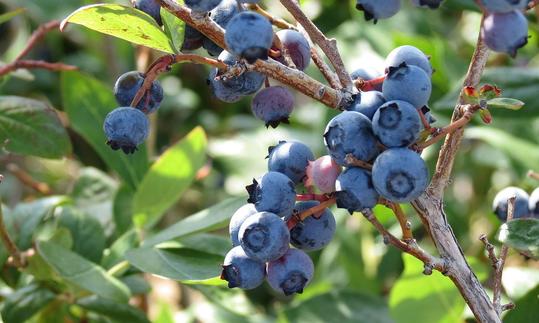

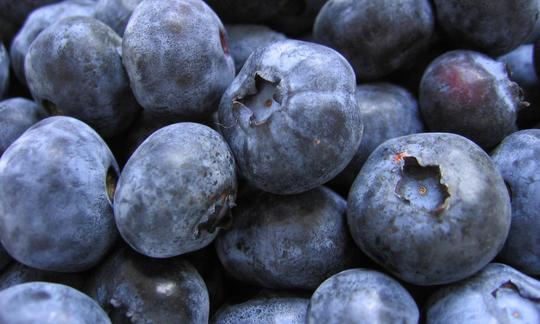

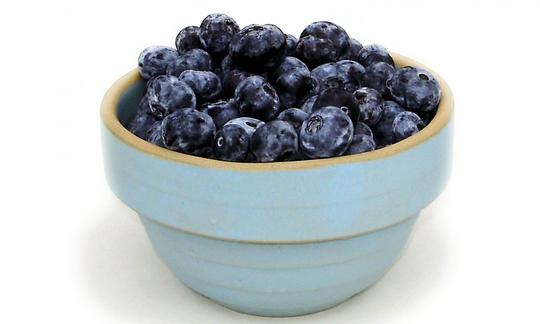

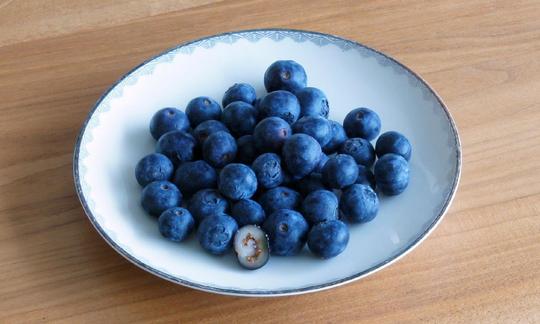

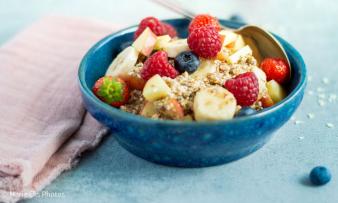
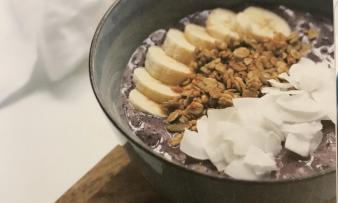
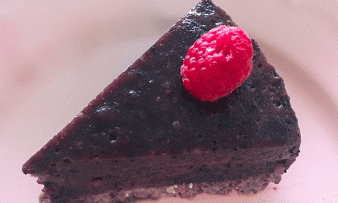





Comments